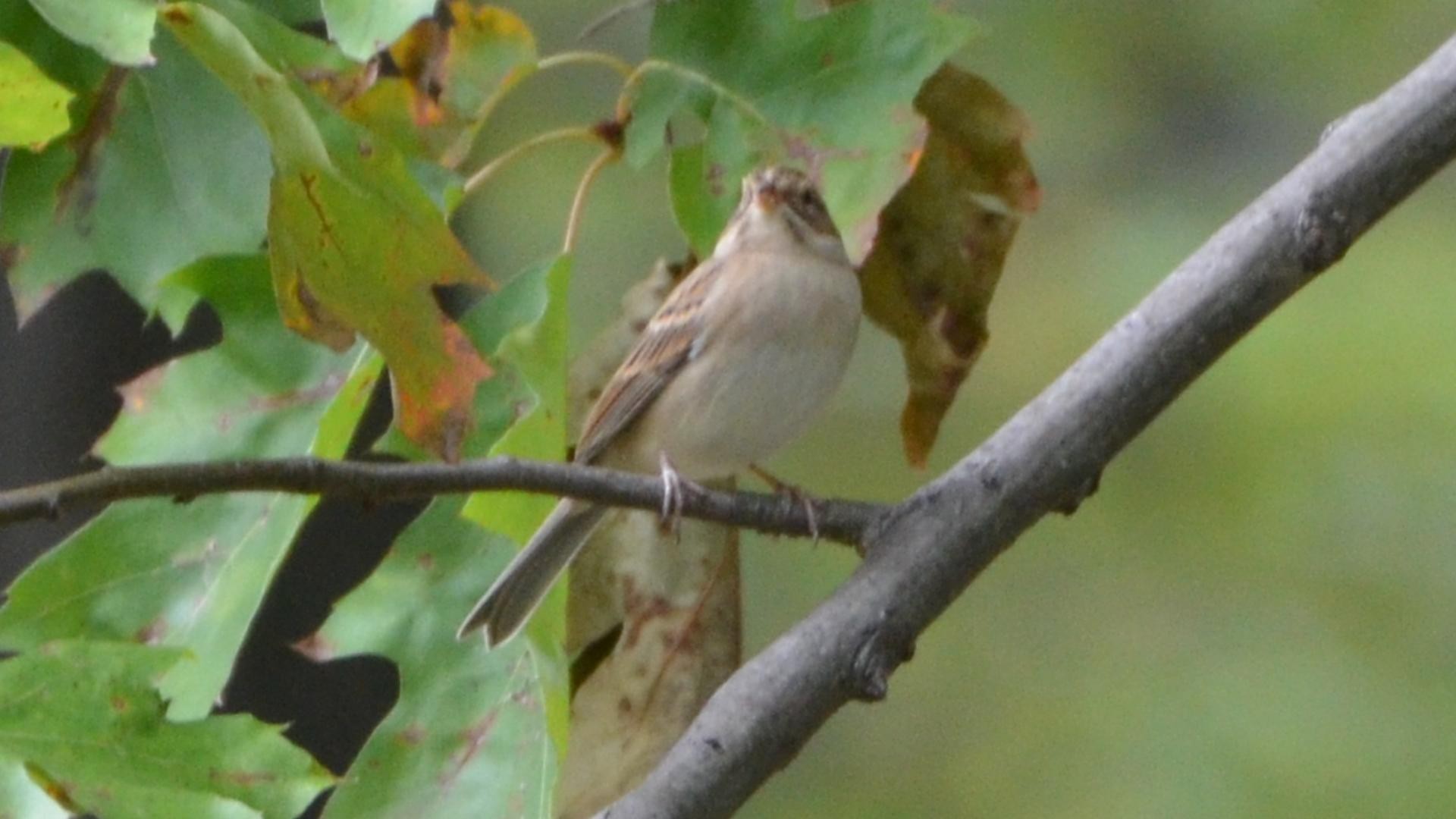Clay-colored Sparrow
A species of Spizella Sparrows Scientific name : Spizella pallida Genus : Spizella Sparrows
Clay-colored Sparrow, A species of Spizella Sparrows
Botanical name: Spizella pallida
Genus: Spizella Sparrows
Content
Description People often ask General Info
 Photo By Andy Reago & Chrissy McClarren , used under CC-BY-2.0 /Cropped and compressed from original
Photo By Andy Reago & Chrissy McClarren , used under CC-BY-2.0 /Cropped and compressed from original Description
The clay-colored sparrow or clay-coloured sparrow (Spizella pallida) is a small New World sparrow of North America. Adults have light brown upperparts and pale underparts, with darker streaks on the back. They have a pale crown stripe on a dark brown crown, a white line over the eyes, a dark line through the eyes, a light brown cheek patch and brown wings with wing bars. The short bill is pale with a dark tip and the back of the neck is grey; they have a long tail. Non-breeding adults and immature resemble chipping sparrows and Brewer's sparrows; they often form flocks with these birds outside the nesting season. Their breeding habitat is shrubby open areas and jack pine woods across central Canada and central northern United States east to the Great Lakes, and is expanding further eastward. The nest is an open cup on the ground or low in a shrub. These birds migrate in flocks to southern Texas and Mexico. Recently, the first record of the Clay-colored Sparrow was documented in South America. The specimen was said to be a Male with abundant fat throughout its body. They forage on the ground, mainly eating seeds and insects. Outside the nesting season, they often feed in small flocks. While nesting, these birds may feed far from the nest; feeding areas are not defended. The male sings from an open perch to indicate his ownership of the nesting territory. The song is a Bzzzz bzzzz za za. This bird's nests are made of grasses and lined with fine materials or hair. Three to five splotched blue-green eggs are laid and incubated for 11 days. They are often parasitized by the brown-headed cowbird; the nest may be abandoned when this happens. 
Size
14 cm (5.5 in)
Colors
Brown
Black
Gray
White
Life Expectancy
5.1 years
Nest Placement
Shrub
Incubation Period
1 - 2 broods
Number of Broods
10 - 14 days
Nestling Period
7 - 9 days
Feeding Habits
Clay-colored Sparrow primarily consume seeds from grasses, forbs, and shrubs, as well as leaf buds. Their diet includes tumbleweed, alyssum, and lambsquarters seeds, among others. They forage on the ground and supplement their diet with insects such as leafhoppers and ants, preferring to feed even beyond their breeding territories in various habitats.
Habitat
Clay-colored Sparrow can primarily be found in open shrublands and brushy prairies across North America, favoring regions with low shrubs and sparse tree growth like jack pines for their breeding territory. They thrive in a semi-arid climate at a wide range of altitudes. During breeding season, they prefer thickets along forest edges, fields near waterways, or regenerating shrubby zones post-fire. In winter, their habitat shifts to deserts and upland plains, particularly amidst thorn scrubs and grassy, brushy hillsides.
Nest Behavior
Clay-colored Sparrow females are primarily responsible for nest-building, with some material collection assistance from males. Nesting activities, including egg-laying, occur in these well-hidden nests, with both parents involved in parental care for the eggs and subsequent young.
Nest Characteristics
Clay-colored Sparrow nests are discreetly sited in shrubs close to the ground, often in vegetation like snowberry or rosebush, using materials like grass, twigs, fine rootlets, and animal hair. The cup-shaped nests measure approximately 4.6 cm across and 3.8 cm deep, with construction spanning 2-4 days.
Dite type
Granivorous
People often ask
General Info
Feeding Habits
Bird food type
Bird Feeder Type

Platform

Small Hopper

Small Tube Feeder
Behavior
Clay-colored Sparrow are active during the day, demonstrating a lively set of behaviors from hopping among branches, flitting between bushes, to short ground hops beneath cover. They are territorial when breeding, males singing from low shrubs to claim their area, avoiding physical confrontation through brief chases. Pair bonds, strictly monogamous for the season, dissolve annually, leading to new pairings. Post-breeding, clay-colored Sparrow become sociable, forming flocks, sometimes with other sparrow species, and adapt their foraging to open, grassy, or desert plains near brushy retreats.
Species Status
Not globally threatened.

 Photo By Andy Reago & Chrissy McClarren , used under CC-BY-2.0 /Cropped and compressed from original
Photo By Andy Reago & Chrissy McClarren , used under CC-BY-2.0 /Cropped and compressed from original Scientific Classification
Phylum
Chordates Class
Birds Order
Perching birds Family
New world sparrows Genus
Spizella Sparrows Species
Clay-colored Sparrow